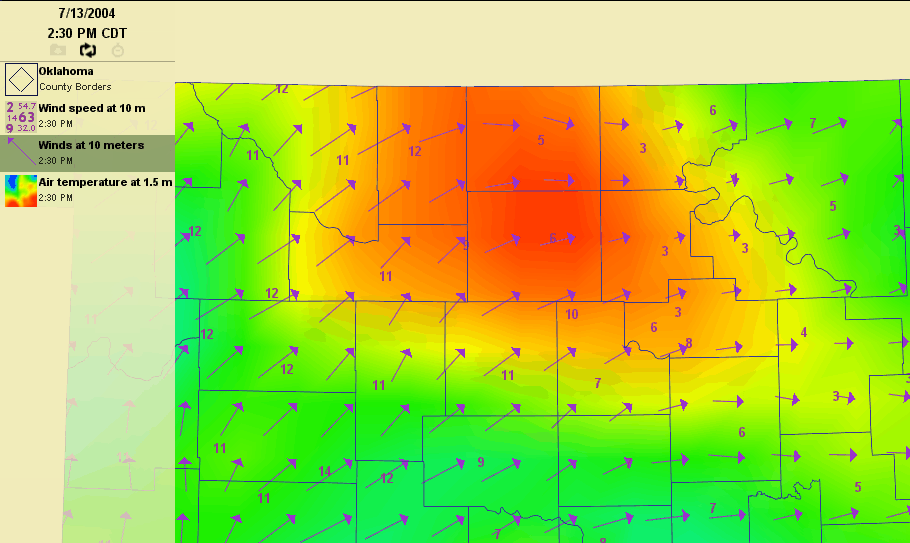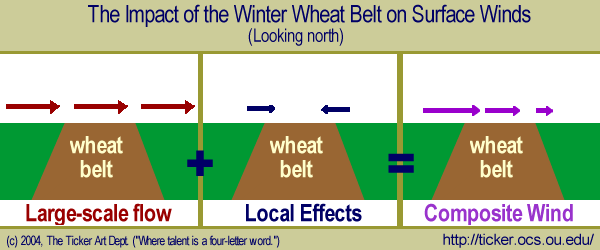Ticker for July 19, 2004
MESONET TICKER ... MESONET TICKER ... MESONET TICKER ... MESONET TICKER ...
July 19, 2004 July 19, 2004 July 19, 2004 July 19, 2004
Winter Wheat "Hot Box" Influences Wind Field
It's no secret that the large area devoted to winter wheat cultivation
differs from its surrounding regions. The winter wheat belt is often
green when its surroundings are brown (like, say, during February).
It is also brown when much of the state is still green (mid-summer).
The primary impact of this contrast, as any Oklahoma kid will tell
you, is that tilled wheat fields are a great place to shoot
firecrackers on the 4th of July. But coming in second for many
meteorologists are the mesoscale phenomena that show up from time
to time.
Take, for example, last Tuesday afternoon. The wheat belt's "hot box"
shows up quite clearly. The feature occurs because the summer sun
shines down on the darker tilled ground and raises surface temperatures
more than those in surrounding lighter-colored areas. Throw in the
diminished latent heating processes of the relatively dry tilled areas,
and you have a recipe for very high temperatures!
Air temperature is represented by the color gradients. Redder means
hotter!


Another effect that can arise from this is the "wheat breeze", which
is akin to the coastal sea breeze and other solenoidal cousins. This
term is associated with local flow into the wheat belt from the edges.
When this local effect is combined with a baseline synoptic flow
(such as on Tuesday), the following effect may show up:

Looking back at Tuesday's maps, that's pretty much what showed up!
The arrows show wind vectors, while the purple numbers are observed
wind speed at each Mesonet station. The overall west-to-east flow
was dicated by the large-scale situation. However, in the vicinity
of the wheat belt, the strongest (i.e., enhanced) westerlies are on
the belt's western edge, while the weakest (diminished) are on the
eastern edge.
Cool stuff!
July 19 in Mesonet History
| Record | Value | Station | Year |
|---|---|---|---|
| Maximum Temperature | 115°F | MANG | 2022 |
| Minimum Temperature | 53°F | COOK | 2014 |
| Maximum Rainfall | 3.82″ | BREC | 1997 |
Mesonet records begin in 1994.
Search by Date
If you're a bit off, don't worry, because just like horseshoes, “almost” counts on the Ticker website!